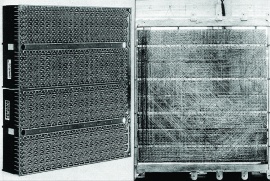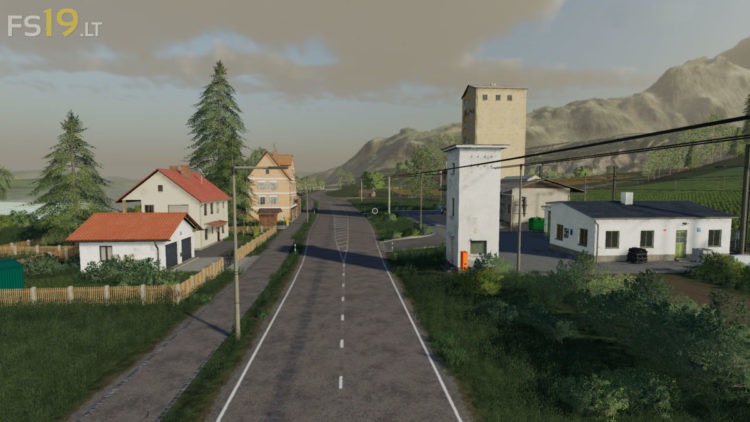The PDP-8 simulator is configured as follows: device names(s) simulates CPU PDP-8/E CPU with 4KW-32KW of memory - KE8E extended arithmetic element (EAE) - KM8E memory management and timeshare control TSC TSC8-75 ETOS operating system timeshare control FPP FPP8A floating point unit PTR,PTP PC8E paper tape reader/punch. A PDP-8/E Emulator in Java. In 1957 I started studying physics at he ETH (Swiss Federal Institute of Technology). Just to be clear, this was really before any computer was known to the large public. The only computer known at that time in Zurich was the ERMETH.Towards the end of the 1960s, while starting on my PhD, I started using the Hewlett Packard 9100B Electronic Calculator. The PDP-8/E Simulator is an emulator for the Digital Equipment Corporation PDP-8/E minicomputer, a famouse computer of the early 1970 years. The simulator, first released 1994, provides a.

Portable PDP-8 and DG Nova Cross-assembler
Intended to be a basic example of an assembler for two simple architectures, written with the aid of lex and yacc (or GNU flex/bison). Being small, it should lend itself to learning, extension and modification.The source code is released under the GPLand has been built and tested on NetBSD, Linux and OS X.
Building and Running
- (First install Subversion client if you don't have it.)
- Check out the source code:
svn checkout http://telegraphics.com.au/svn/dpa/trunk dpa - Build:
cd dpa; make - Test:
make test(assembles all included examples)
More information
See the PDP-8 FAQ.If you don't own a PDP-8 (sadly, nor do I), I can highly recommend Bernhard Baehr's slick PDP-8/E Simulator for Macintosh, which apart from being attractive and usable, has the impressive virtue of running on all system software versions from 2 through OS X. Also available is Bob Supnik's outstanding simh emulator for these, and many other, machines (including software kits).
The assembler also targets the DG Nova,a related architecture with a 16-bit word length.
JLG Industries, Inc. Is the world's leading designer, manufacturer and marketer of access equipment. The Company's diverse product portfolio includes leading brands such as JLG® mobile elevating work platforms; JLG and SkyTrak® telehandlers; and an array of complementary accessories that increase the versatility and efficiency of these products. 
Why lex and yacc?
It has been said that writing an assembler using lex and yacc is 'cheating'. I can clearly show that it is, in fact, a very rational choice of tools.
The huge payoff of using lex and yacc:they free the assembler writer from the very tedious and error-prone activitiesof designing and building the lexical analyser and parser,and allows the author to concentrate on the relevant parts of the project:those that pertain to an assembler in general, and those that pertainto the specific architecture at hand.
(For simplicity I will refer to flex and GNU bison below rather than the original UNIX lex and yacc. Also note thatall line counts run roughshod over comments, whitespace, etc.)
The magnitude of this payoff can be shown by a quick measurement of the source code:| dpa 1.95 | lines | approx. fraction per architecture | |
| architecture independent code | 785 | 47% | |
| PDP-8-specific code and tables | 695 | 42% | |
PDP-8 lexer (.l) | 70 | 4% | |
PDP-8 parser (.y) | 109 | 7% | |
| Nova-specific code and tables | 1071 | 42% | |
Nova lexer (.l) | 191 | 8% | |
Nova parser (.y) | 476 | 19% | |
| Total | 3397 | ||
Jones/Coon/Baehr pal.c | |||
| lexing/parsing related code | 692 | 58% | (In particular I believe it is fair to include the large switch in onepass(),as this structure directly corresponds to the form of the parser.yI have used for dpa.) |
| other code and tables | 508 | 42% | |
| Total | 1200 | ||
| flex 2.5.4a source | 17,033 | (I am being only slightly unfair here, since flex and bison are general purpose tools,not tailored for a specific project. This is not a very relevant objection however,because dpa ends up exercising a significant part of their feature set, andalso a custom-designed lexer/parserby definition is one-time effort that cannot be amortised over multiple projects.) | |
| bison 1.875 source | 21,871 |
It is clear that the effort is being expended where it should be, on the higher level task:nearly half on architecture-independent code (the stuff that any assembler does);and the other half on architecture specifics. The intricacies of lexing and parsingdo not weigh the project down unnecessarily at only about one tenth of the overall product.The benefit to maintainability is hard to overstate.
Pdp-8/e Simulator
In the case of the excellent pal.c assembler,the lexical analyser and parsing logic, as elegant as it is,overwhelms the actual task at hand, at nearly 60% of the total.

Pdp 8 Simulator
Because flex and bison are mature, high performance and debugged products,a resulting assembler (for any non-trivial input syntax) is far easier to maintain,more reliable, and very likely faster than one using a handbuilt lexer/parser.One important reason for this is that lexical analysers and parsers are particularlytedious machines to design, build, test and make fully correct; it's an entirefield of study in itself. An assembler is a relatively simple thing.
In the Larry Wall sense, sometimes I am a 'lazy' programmer who would prefer to solve a problemthan reinvent a very intricate set of wheels.I often judge a toolset by how closely the size of a solutionreflects the size of a problem. If the solution is somehow disproportionateto the difficulty of the problem, then likely the wrong tool is being used,or the tool is badly designed. (Examples are legion.) Hire a cocktail maker near me.
In short, if I sit down to write an assembler, I should be thinking about the stuffan assembler does, and the architecture for which I am assembling.If I can leverage the drudgework put in by the geniuses who designed lex and yaccand their descendants, I will.

